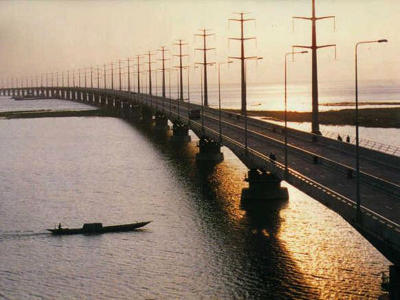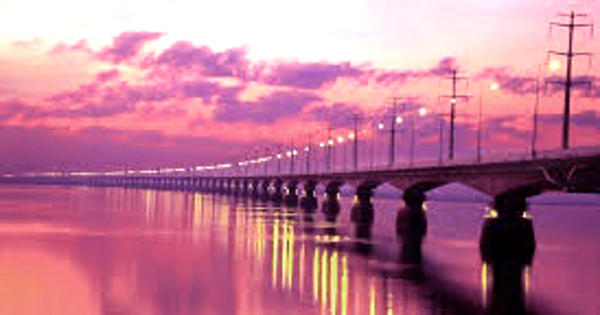Jamuna Multipurpose Bridge
Jamuna Bridge was once a dream. But finally, the dream had been turned into a reality after 4 yearlong efforts of about 4000 people. It is the result of the successive demands of the people of the north Bengal. In the history of the country, the bridge will remain as a milestone. The successful completion of this bridge is recognized as the largest achievement in the past liberation period of Bangladesh. It was constructed over the river Jamuna, the mightiest of the three major rivers of Bangladesh, and the fifth largest in the world in terms of volumetric discharge. It has been named after the founder president of Bangladesh Bangabandhu Sheikh Mujibur Rahman.
The Jamuna Bridge is a 5.63km-long crossing over the Jamuna River, one of the three major rivers of Bangladesh. The idea for the construction of a bridge over the Jamuna was first chalk out in the sixties of the 20th century. Later on, in June 1984, the government of Bangladesh decided to build the Jamuna bridge. Later on, in June 1986, three consultants called renal palmer triton [PPT]. NEDECO and Bangladesh consultant ltd. [BCL] completed their first phase of the possible study, Then in June 1987, these consultants carried out a detailed economic possibility and engineering design of the bridge. They also prepared tender documents for the project. The bridge is situated in Eelenga, Tangail and Nakla, Sirajgonj 15 km, and 13 km away from the river Jamuna respectively. The location is some 300km away from the coast.

The total project cost was jointly funded by the government of Bangladesh, world-bank, Asian development bank and Japanese-overseas economic co-operation found. The construction work of the bridge started in October 1994. Thousands of workers including foreigners worked hard to complete the bridge. It has been constructed on steel piles. It consists of 49 spans, 1263 segments, 121 piles, and 50 pillars. The bridge is carrying a two-lane road with a breakdown lane, a dual-track [broad and meter gauge] railway line, a 320 kV power transmission line, a gas pipeline, and telecommunication cables.
It generates multifarious benefits for the people and especially, promotes inter-regional trade in the country. Apart from the quick movement of goods and passenger traffic by road and rail, it facilitated the transmission of electricity and natural gas and the integration of telecommunication links. The Bridge over the river Jamuna is the largest bridge from Bangladesh. It’s now the 5th longest bridge from South Asia. This bridge connects the North Bengal, connection place is Sirajganj and Bhuapur of Tangail. This bridge was open for the public during June 1998. Initially, the bridge was open for all the visitors, tourists, and all pedestrians. But now this bridge is only accessible using certain kinds of vehicles.
The construction of the bridge was ended on June 20, 1998. On June 23, 1998, the bridge was officially inaugurated by then the honorable prime minister of Bangladesh Sheikh Hasina. The bridge is 4.8 km long and 18.5 m. wide. The bridge is recognized as the 11th longest bridge in the world. To develop the country’s infrastructure; the importance of the Jamuna bridge is immeasurable. Bangabandhu Bridge has been now placed under the administrative control of the Bangladesh Bridge Authority. It currently wields enormous socio-economic impact on Bangladesh by linking millions from the country’s northwestern districts to the rest of the country. It is a blessing to the country.
















